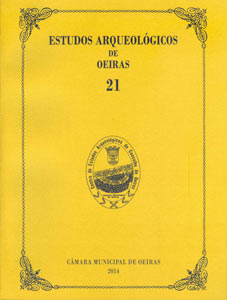O povoado calcolítico fortificado da Moita da Ladra (Vila Franca de Xira, Lisboa): resultados das escavações efectuadas (2003-2006)
Palavras-chave:
Campaniforme, Povoado fortificado, Calcolítico, Moita da Ladra, Vila Franca de Xira, LisboaResumo
The Chalcolithic fortified settlement of Moita da Ladra is located on the top of a high volcanic chimney that dominates the Tagus estuary. The archaeological site was entirely excavated due to the exploitation prosecution of a basalt quarry. The identified archaeological structures are both defensive and residential. The remains of an ellipsoidal wall with 80 m length and 44 m width including two massive towers and na entrance facing the Tagus estuary on the southern side. This settlement’s builders wanted it to be easily seen from the river and at a long distance. Besides its defensive function this archaeological site is intended to be a landmark in this landscape. The implantation of this Chalcolithic settlement is related with the access control of the large inner basin of Loures lowland, related with Sizandro river basin flux in which Zambujal fortified settlement is located. The site has only one occupation phase with few but diversified archaeological remains characterized with both decorated ceramics of “folha de acacia/crucífera” group and bell beakers ceramics represented by maritime vases and vases with geometric decoration. Radiocarbon dating points out to the occupation of this site during the second half of the 3rd millennium BC, the same of other high fortified settlements of this region, such as Penha Verde (Sintra) or Leceia (Oeiras). The coexistence of both bell beakers ceramics and non beaker’s ceramics of “folha de acacia/crucífera” group has an important cultural meaning that is valued in this article.
Downloads
Publicado
Como Citar
Edição
Secção
Licença
Os artigos publicados são da exclusiva responsabilidade dos Autores.
É expressamente proibida a reprodução de quaisquer imagens sobre as quais
existam direitos de autor sem o prévio consentimento dos signatários dos artigos
respectivos.




